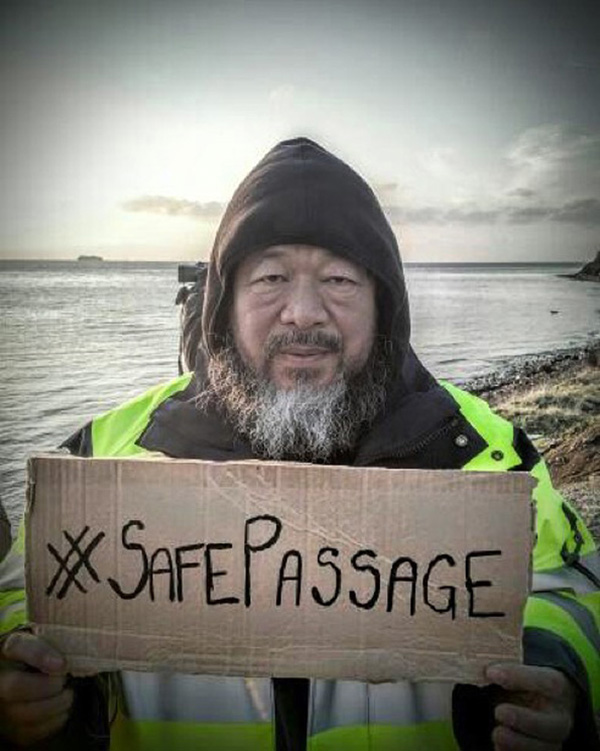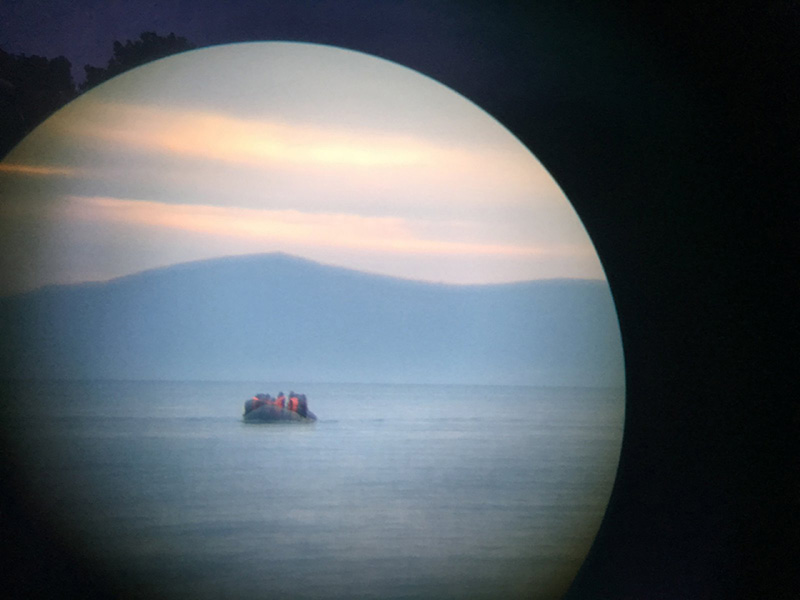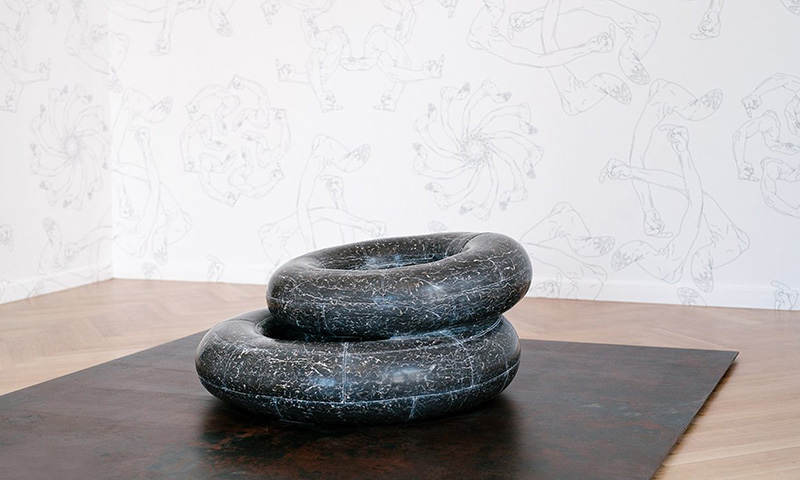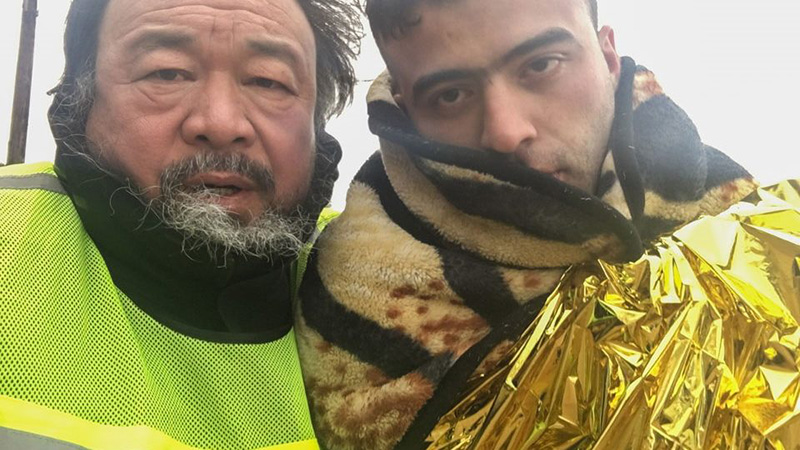ART-PRESENTATION:Ai Weiwei #SafePassage
 All art is political in the sense that all art takes place in the public arena and engages with an already existing ideology. Having left a life of constant government surveillance, Ai Weiwei feels a personal affinity with the growing influx of refugees attempting to enter the EU. Since his first visit to the Greek island of Lesbos in December 2015, he and his team have travelled to refugee camps all around the Mediterranean, including those in Syria, Turkey, Italy, Israel and France.
All art is political in the sense that all art takes place in the public arena and engages with an already existing ideology. Having left a life of constant government surveillance, Ai Weiwei feels a personal affinity with the growing influx of refugees attempting to enter the EU. Since his first visit to the Greek island of Lesbos in December 2015, he and his team have travelled to refugee camps all around the Mediterranean, including those in Syria, Turkey, Italy, Israel and France.
By Efi Michalarou
Photo: Foam Archive
The exhibition “#SafePassage” deals with the struggle between the individual and the systemic structures that dominate society. It will highlight both the experiences that prompted Ai Weiwei to leave his homeland and the experiences of hundreds of thousands of refugees and migrants; people who continue to risk their lives to reach Europe, often to find their path barred by arduous asylum procedures and xenophobia. The exhibition begins with works reflecting on the artist’s personal experiences of life under surveillance. In 2011, following his arrest at the Beijing International Airport Ai Weiwei was secretly held for 81 days without any official charges being filed. During his imprisonment, he was constantly interrogated and placed under 24 hour supervision. After his release, his passport was confiscated and the authorities continued to watch his every step. Whilst under surveillance, Ai Weiwei sought to regain a sense of control, as well as to challenge and invert the constant invasion of his privacy. His passport was eventually returned to him in July 2015. Shortly afterwards he left for Berlin where he now has his studio. He continues to use the strategy of ultimate self-surveillance through the almost endless stream of images he posts. Since his first visit to the Greek island of Lesbos in December 2015, his Instagram feed has functioned as a de facto real-time newswire as he and his team travelled to refugee camps across the Mediterranean. In the second part of the exhibition, the walls of Foam are plastered with thousands of pictures he took with his mobile phone, mostly candid shots which provide a sense of the living conditions within the camps. The immense collage reflects on the vast array of personal encounters the artist had with individuals in refugee camps, further underlining the scope of this crisis. Ai Weiwei’ s images are accompanied by a selection of his iconic marble sculptures and a selection of video works amongst which: “Chang’an Boulevard” (2004), which documents the road that dissects Beijing in half on its East-West axis, and “On the Boat” (2016), in which we see the artist on an abandoned boat in the middle of the ocean.
Info: Foam, Keizersgracht 609, Amsterdam, Duration 16/9-7/12/16, Days & Hours: Mon-Wed & Sat-Sun 10:00-18:00, Thu-Fri 10:00-21:00, www.foam.org




